Onions, leeks, chives and garlic are edible members of the Allium family, a genus distinguished by the simple flower umbels that are usually arranged in the shape of a dome or a ball.
You may also like
- Plants for full sun
- 21 brilliant bulbs that will give you colour all season
- How to grow garlic
- These new varieties of alliums flower through summer
Alliums are mainly native to the northern hemisphere with a few species found in South America. How many allium species there are remains unclear. In her authoritative 1992 book, Alliums (Batsford Ltd), Dilys Davies writes that there are between 800 and 1,000 species, but subsequent research suggests that there may be no more than 750.
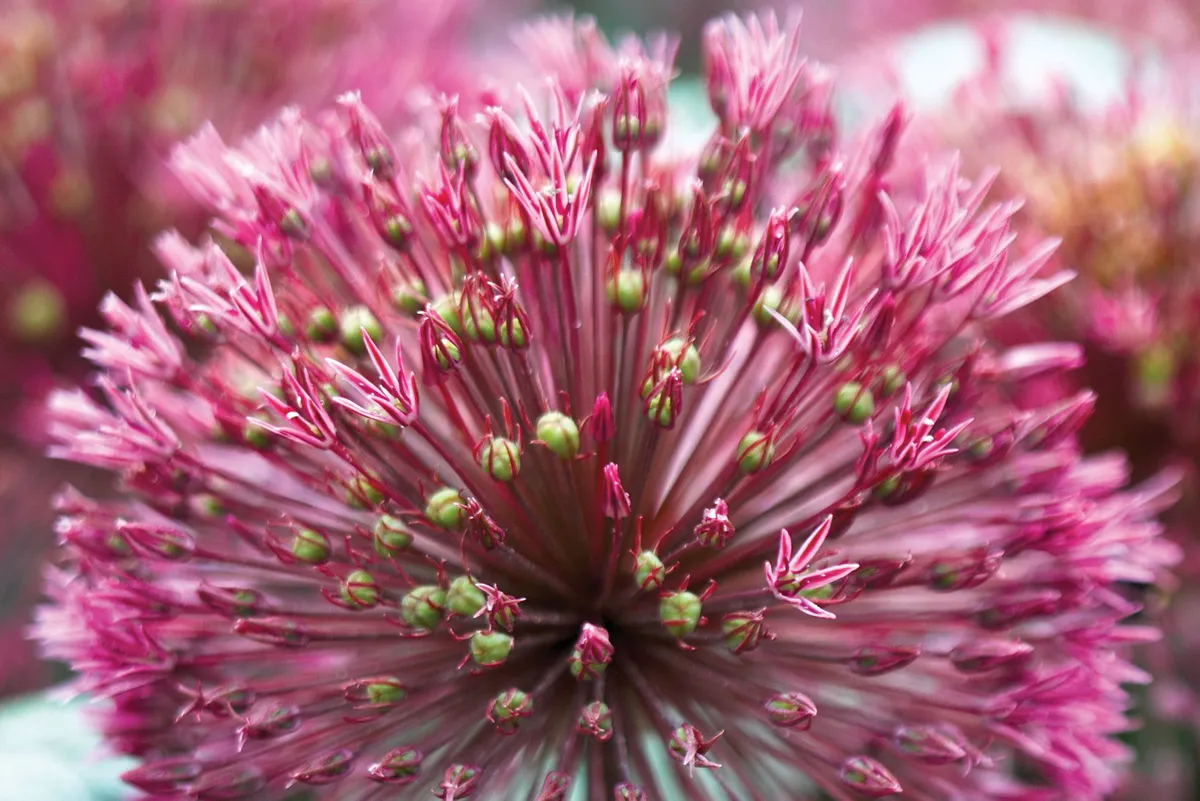
In the garden, the most popular alliums are those with tennis-ball flowers on the top of tall stems. Drifting on a cloud of grasses or punctuating a parterre, they are at home both in formal gardens and naturalistic planting schemes. Allium hollandicum ‘Purple Sensation’ is the flag-bearer for this group, but there are forms with larger flowers in a range of purples and mauves.
IN BRIEF
- What Genus of about 750 flowering bulbous plants – informally known as the onion family and characterised by a distinct smell that varies in intensity between species.
- Origins Most come from the temperate climates of the northern hemisphere, particularly Europe; fewer from Central Asia and South America.
- Size From 10cm to 1.2m tall with flowers up to 45cm in diameter.
- Conditions Species for the cut flower trade are more needy, but most will flourish in well-drained soil in full sun.
Not all alliums have dense, spherical flowers. Allium cernuum has loose flowers made of pinky-mauve bells that dangle from dark pedicles in June.
With so many species in the wild it is not surprising that new ones are still being introduced into cultivation. Allium litvinovii has recently been found growing in Uzbekistan and Kyrgystan, and is starting to be available in specialist nurseries. The intense blue flowers make it very appealing.
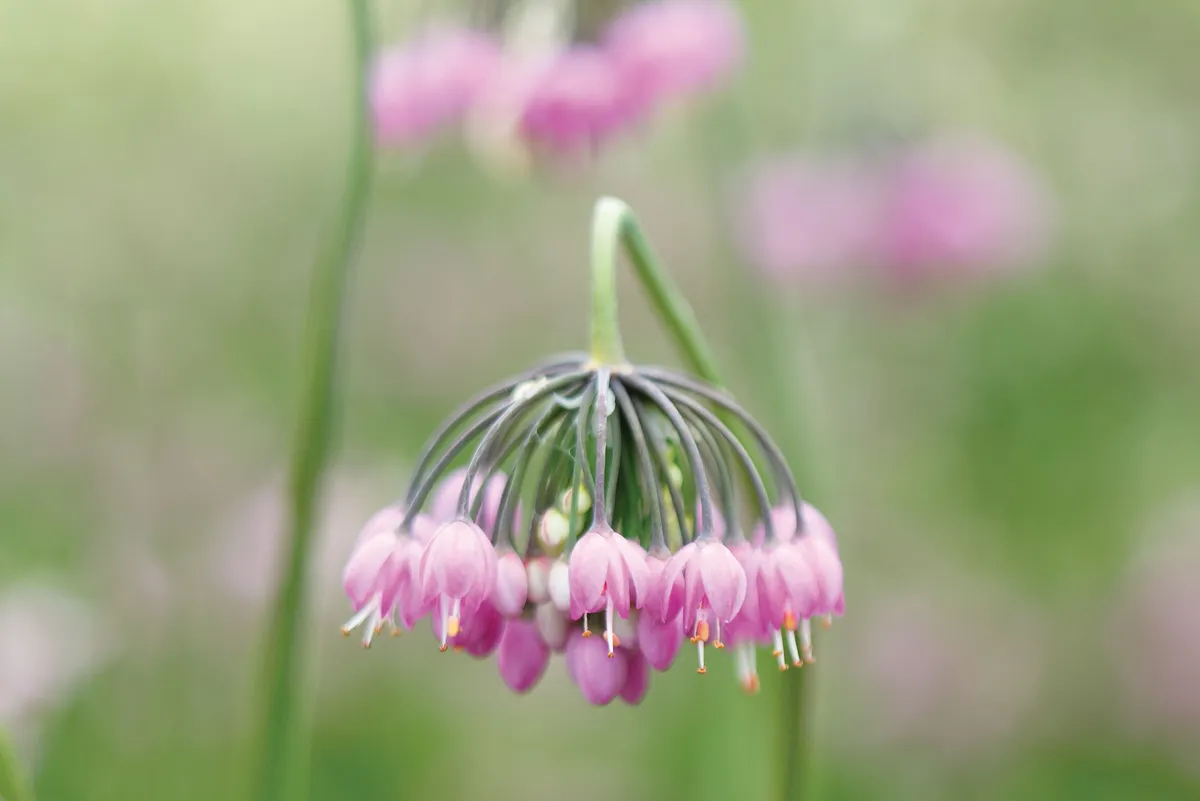
How to grow alliums
When do alliums flower?
Alliums flowers mainly in early summer, with a few species flowering in late summer. Seedheads can last into autumn.
Where to plant alliums
Most alliums need a well-drained soil and prefer a sunny site. If you have heavy clay, dig in plenty of compost and horticultural grit before planting them.
When to plant alliums
Alliums bought in pots can be planted at any time but you will get more for your money if you buy them as dry bulbs in the autumn.
How to care for alliums
Using plant supports or bamboo canes to hold up tall varieties will always look ugly, so grow them through other plants to keep upright.
The leaves of many alliums, particularly the tall forms, are lax and long and quickly become tatty. By the time the plant is flowering they are often very unsightly. If you have the time (and can be bothered) you can trim off the dead parts, but it is often easier to plant the bulb so that the foliage is hidden by other plants.
Growing alliums in pots
Some of the smaller alliums grow well in pots and many grow well in larger containers. Allium caeruleum, which has bright blue flowers on 50cm- tall stems in June and July, can be difficult in the garden but thrives on the good drainage and baking heat of a pot in full sun.
My favourite allium for growing in containers is the short (20cm tall) Allium senescens subsp. glaucum. The dusky-pink flowers, the size of a ping-pong ball, last for about six weeks in August and September and are surrounded by blue-grey leaves that corkscrew around the stems.
Alliums to avoid
Not all alliums are welcome in the garden; some are invasive weeds that can be difficult to get rid of.
- Allium ursinum Also known as wild garlic or damsons, they may look pretty in the dappled light of woodland but in the garden the plant will spread rapidly by seed and bulbil and smother less vigorous plants. It is tempting to grow them because the leaves are tasty in soups and salads, but only plant them if you have acres of woodland for them to romp around in.
- Allium paradoxum This, too, will quickly swamp other plants, as will the white-flowered Allium triquetrum, a Mediterranean plant that has naturalised in parts of Cornwall and Devon.
- Allium roseum This, plus the quirky Allium vineale ‘Hair’, has tiny bulbils at the centre of the flower, making them disastrously prolific. If you already have them in the garden never put them on the compost heap, as this may spread them even further.
15 alliums to grow
Allium schubertii
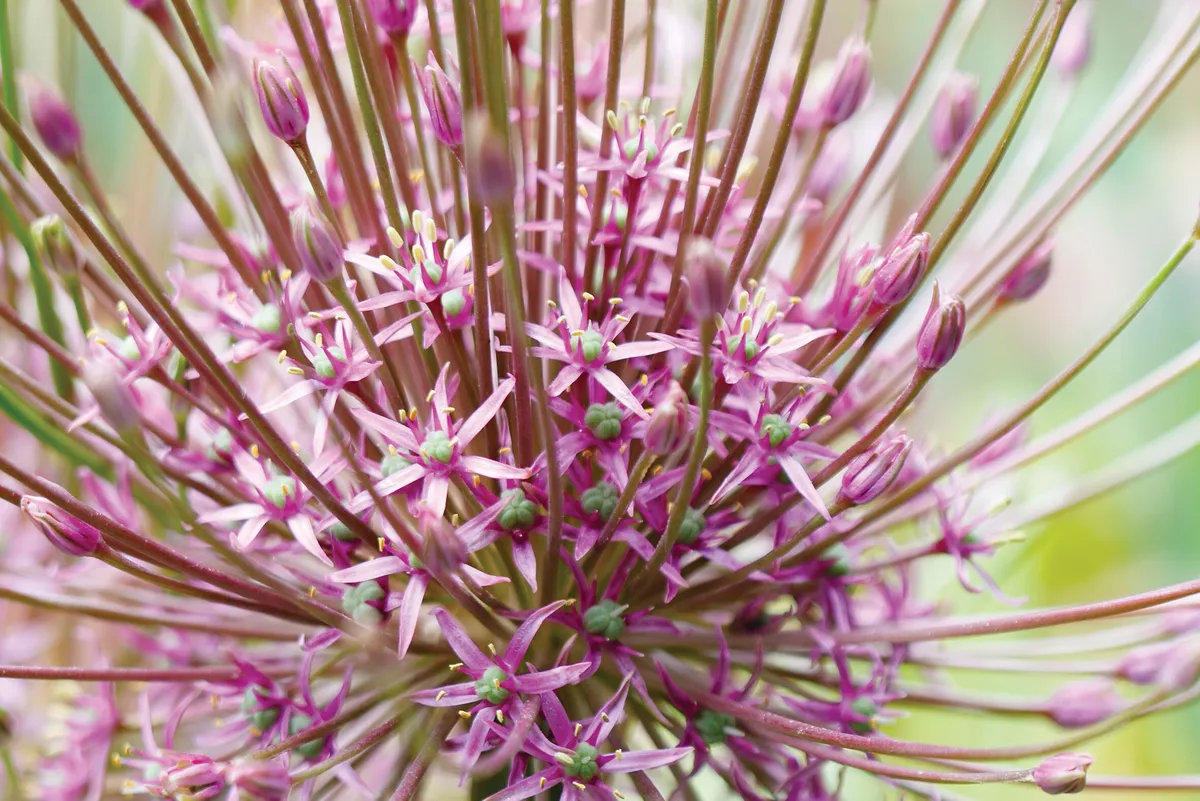
The most spectacular flower of the genus, resembling an exploding star. When mature the flowers measure 40cm across. It needs good, fertile soil that gets baked by the summer sun to thrive. 50cm
Allium nevskianum

A low-growing species from dry, high-altitude locations in Afghanistan and Tajikistan. The flower grows to about 12cm in diameter on such short stems that it seems to be growing directly from the ground. 30cm
Allium hollandicum ‘Purple Surprise'
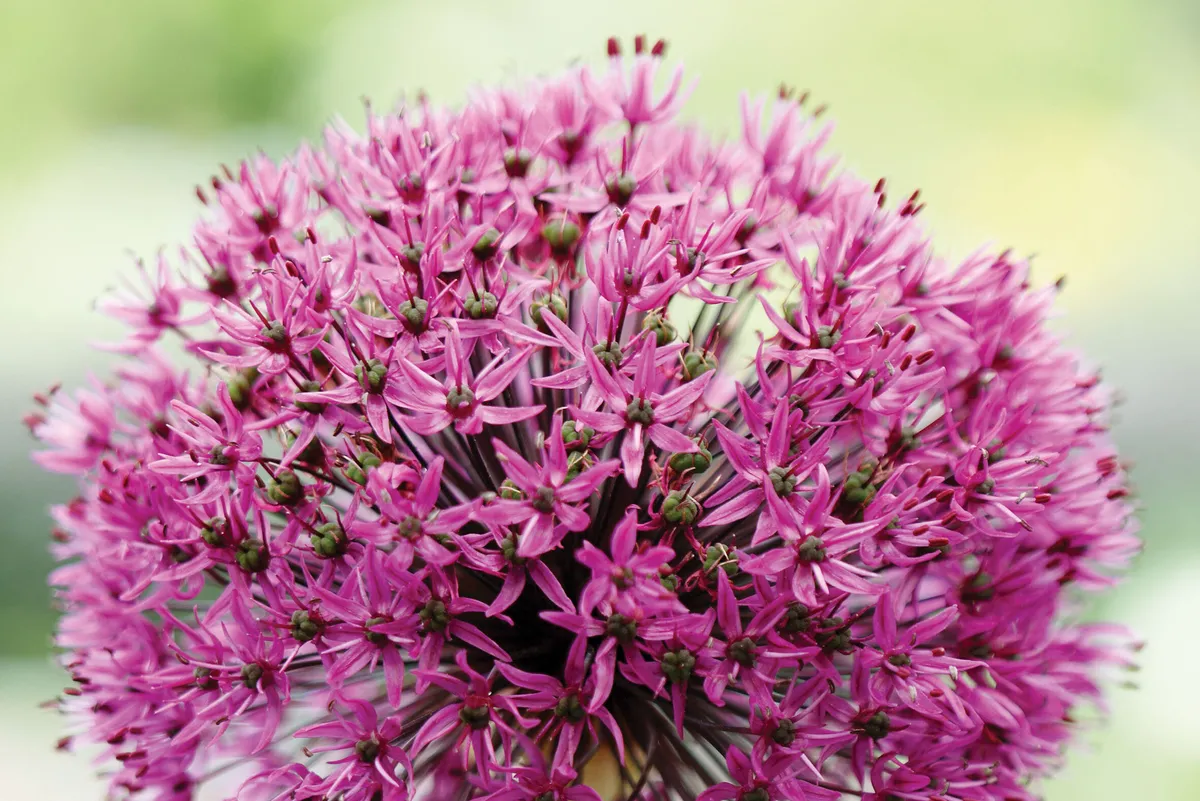
A selection from the popular Allium ‘Purple Sensation’, this hybrid has a dense flower head of dark-purple flowers on a tall, strong stem that will withstand winds and intemperate weather far better than its cousin. 1.3m
Allium ‘Firmament'
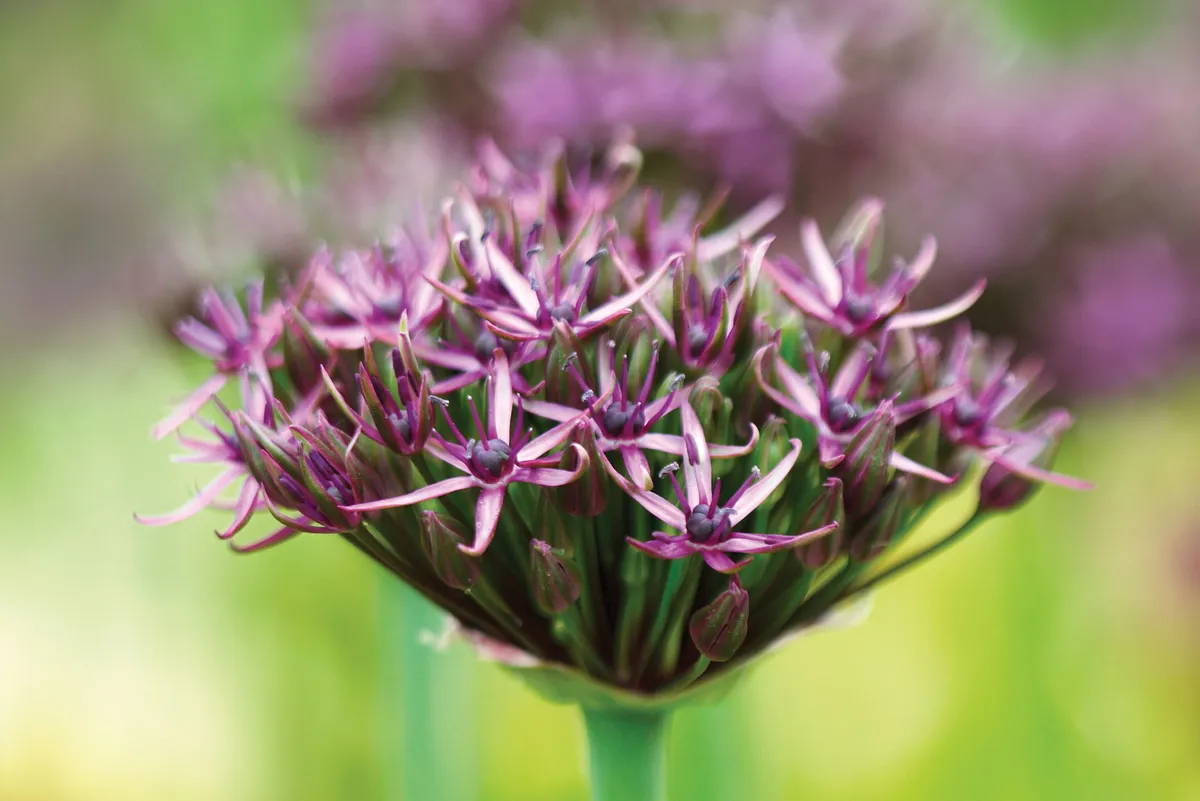
The dome-shaped flowers of Allium ‘Firmament’ have inherited a metallic sheen from one of the plant’s parents, Allium cristophii. These look at their best when planted in large groups. 75cm
Allium cernuum

A North American native that grows in gravelly soils. Several flowering stems are produced from the same bulb to give an impressive display in early July. Produces lots of seedlings. 30cm
Allium nigrum 'Silver Spring'
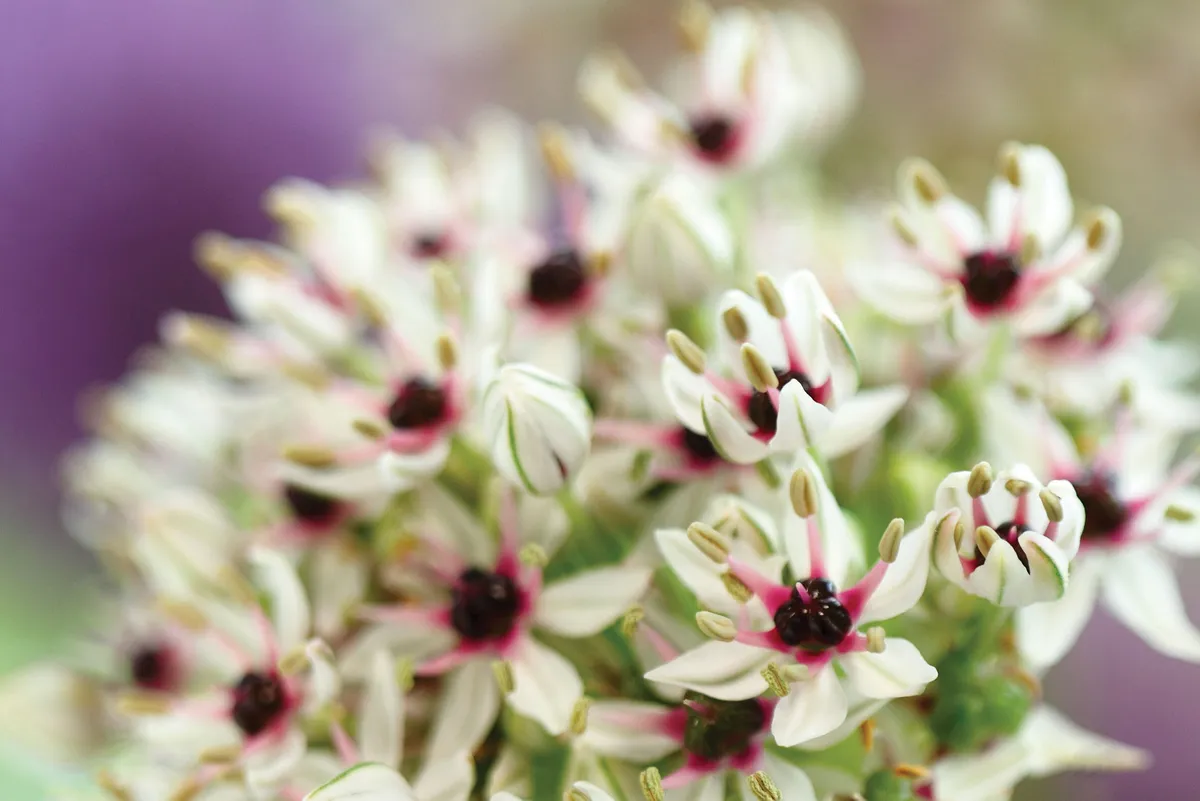
The flowers last for two weeks as a cut flower and, in the garden, have a faint, sweet scent throughout May and June. 1m
Allium karataviense

Very broad, grey-green leaves lie close to the ground and cradle the 12cm diameter pinkish grey flowers. Unlike many alliums, the foliage remains neat during the flowering period. 25cm
Allium huber-morathii
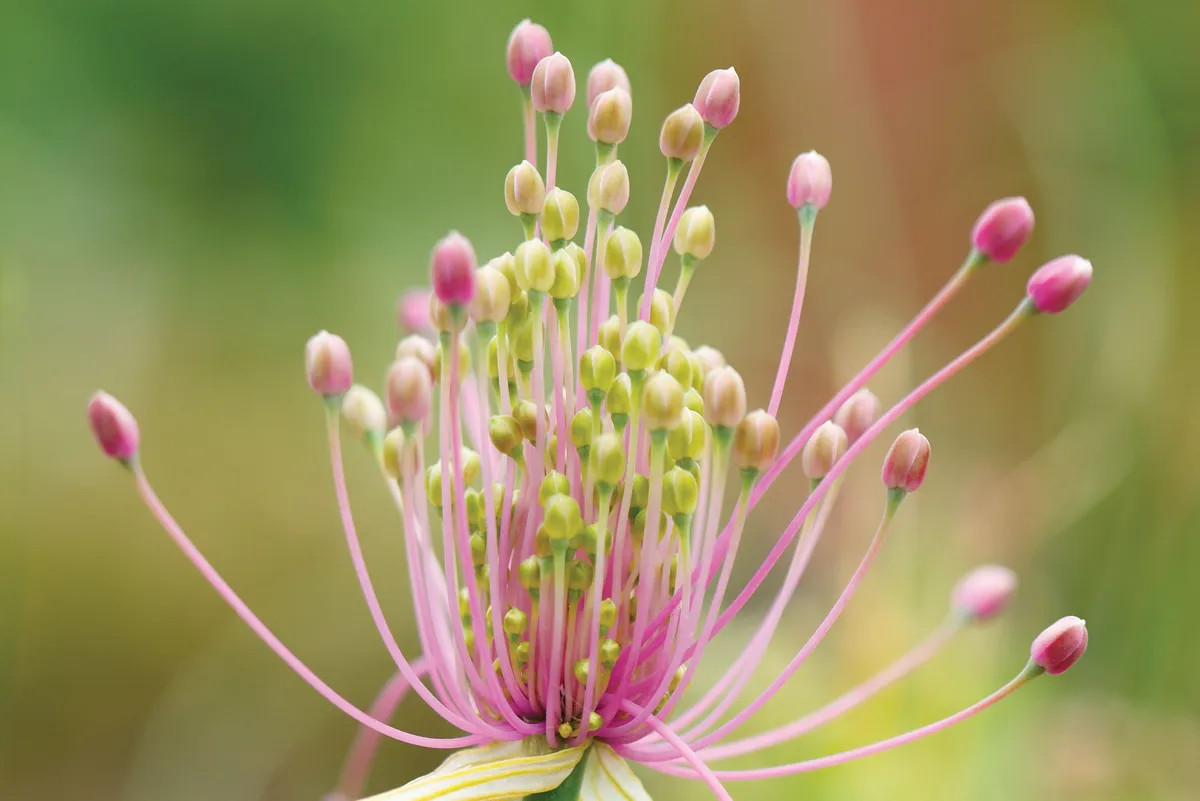
A rarely seen species that originates in the Pontic mountains of northern Turkey. Its delicate and extremely pretty flowers are sparse and create loose, mop-like heads of deep-pink flowers in June. 25cm
Allium litvinovii
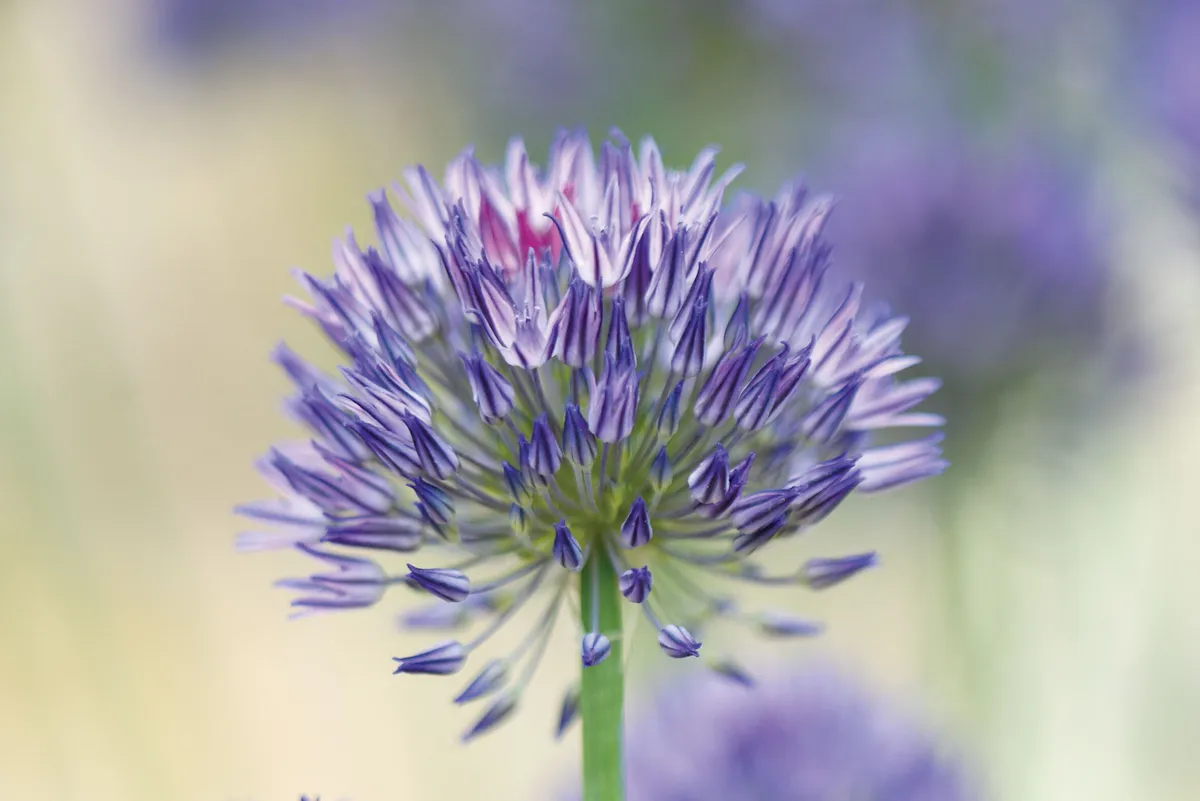
The intense, sky-blue flowers of this recently introduced species make it a very desirable plant. Needs excellent drainage, particularly during the winter months. The flowers are the size of a ping-pong ball and grow to 40cm tall.
Allium atropurpureum
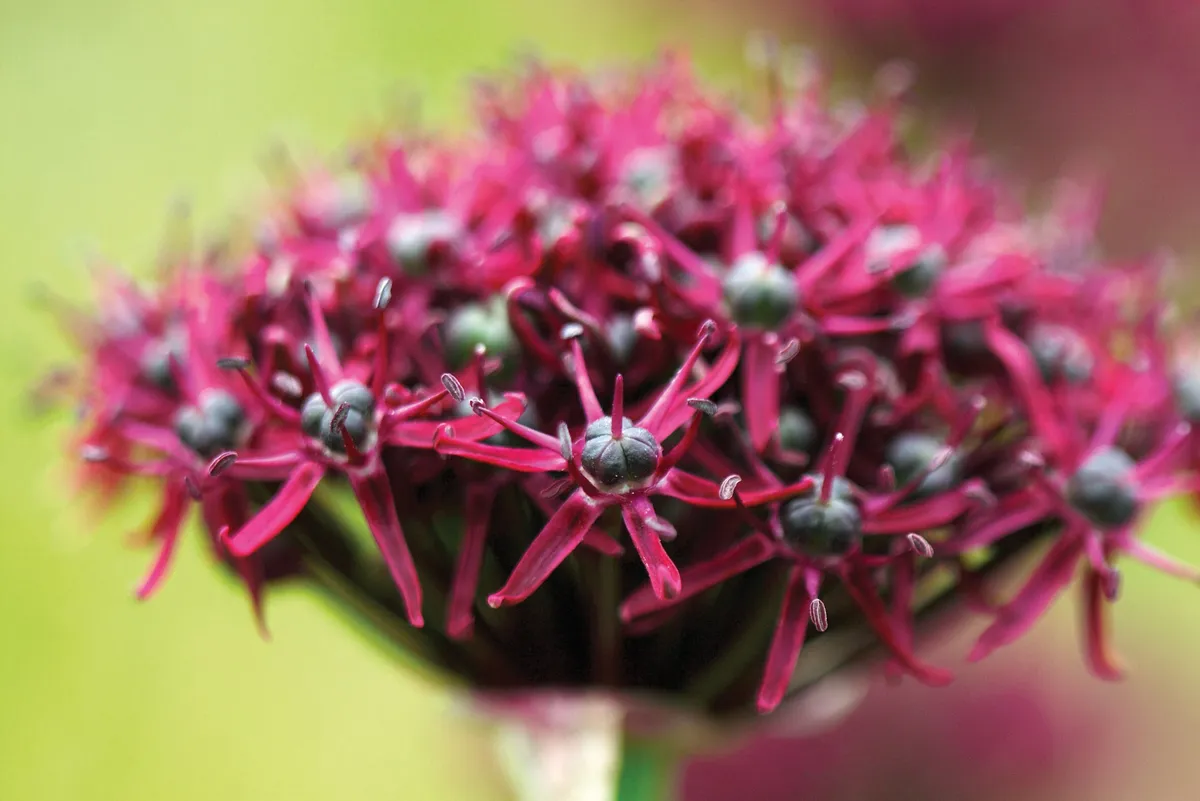
The dark-reddish purple flowers open to a dome shape, rather than the globe more typical of alliums and last for several weeks during May and June. Sturdy stems make them good for cutting. 70cm
Allium amplectens ‘Graceful Beauty’
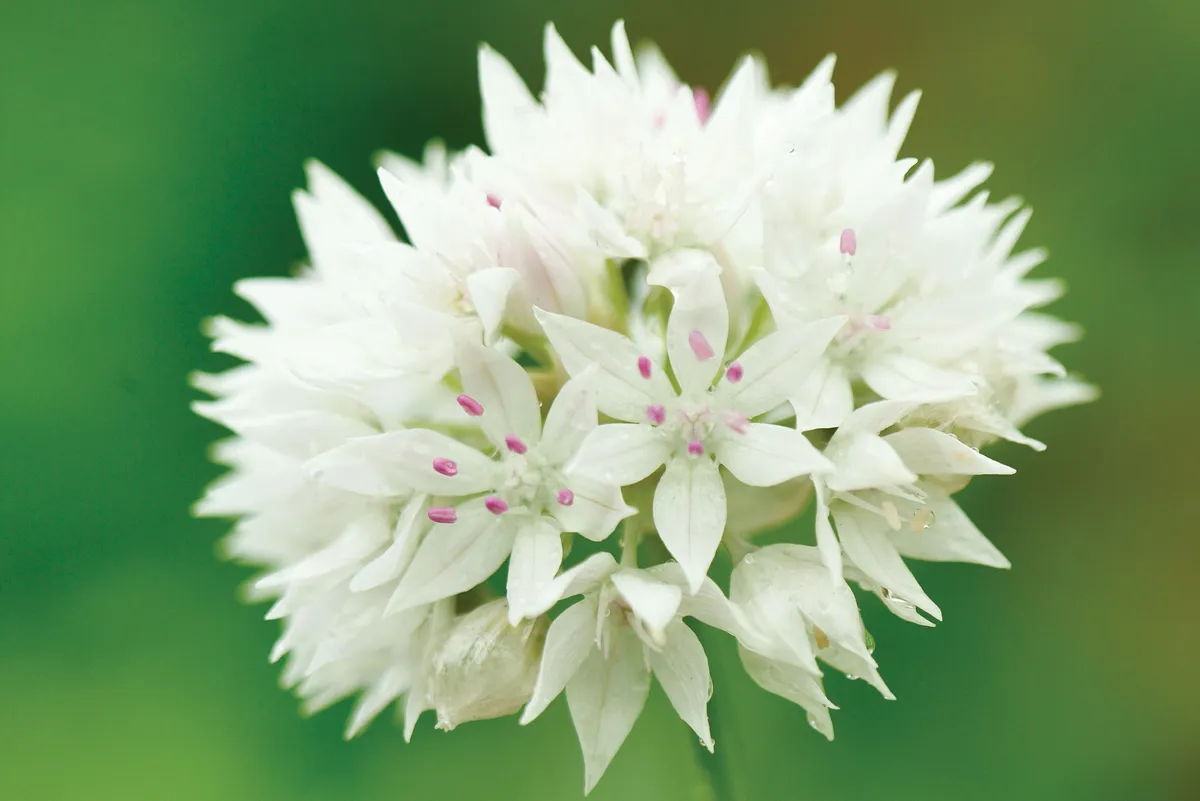
A floriferous cultivar that was originally bred for the cut-flower industry. The white petals each have a pale-pink stripe at the base and the flowers have lavender-blue stamens. 30cm
Allium obliquum
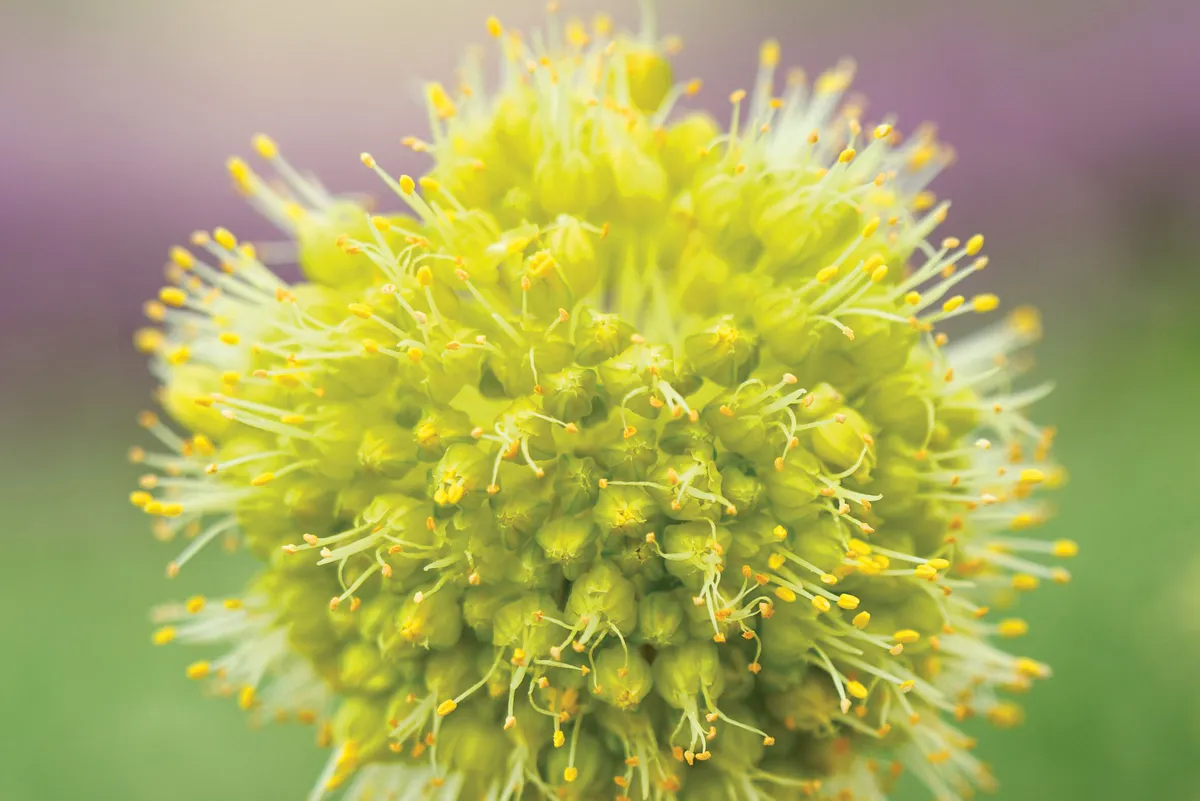
A native of Xinjiang, Mongolia, Kazakstan and southern Russia, where it grows in meadows and scrub. The soft-yellow flowers, which appear in June, are the size of a hen’s egg and grow on twisted stems. 50cm
Allium chloranthum
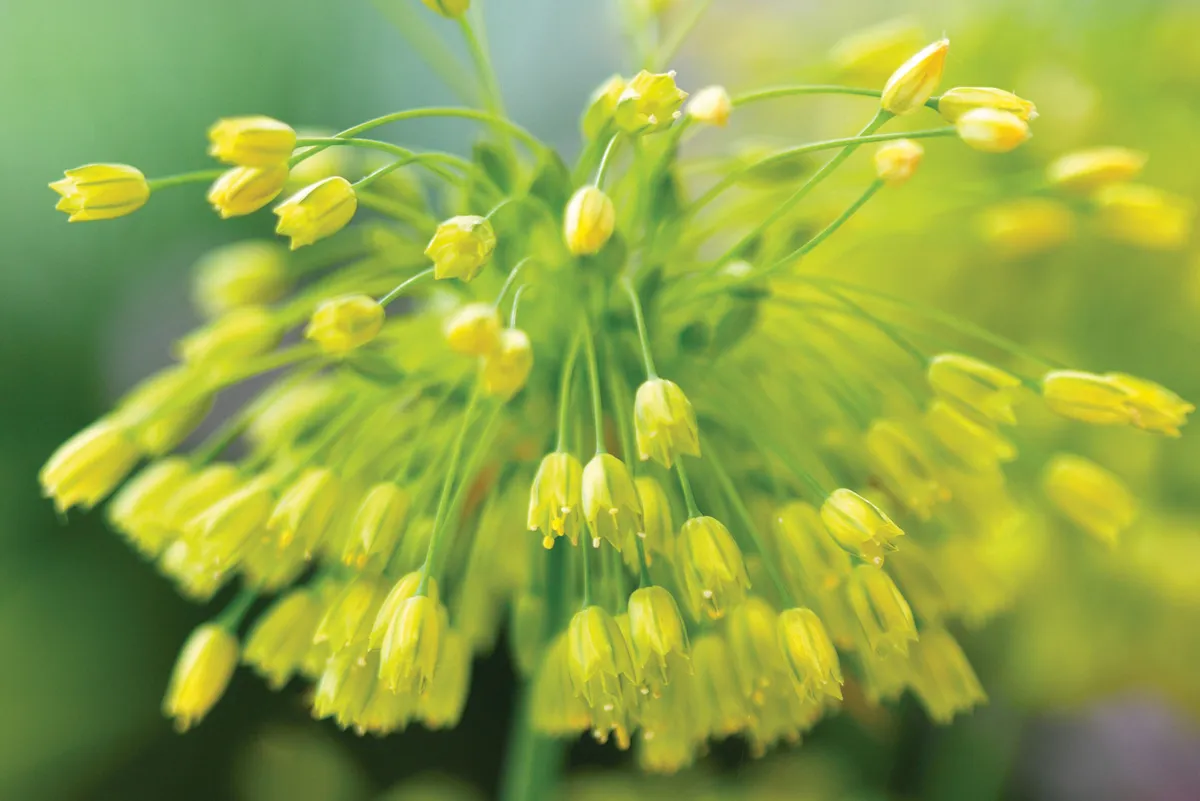
Yellow-flowered species from Lebanon, Syria and Turkey that resembles the common European Allium flavum. The tightly packed stems that form the umbel give
the flowers a greenish sheen. 50cm
Allium pskemense

Similar in appearance to the edible onion (Allium cepa), this species from Uzbekistan has bright white flowers the size of tennis balls. The stems are hollow but sturdy and the bulb increases quickly. 80cm
Allium convallarioides
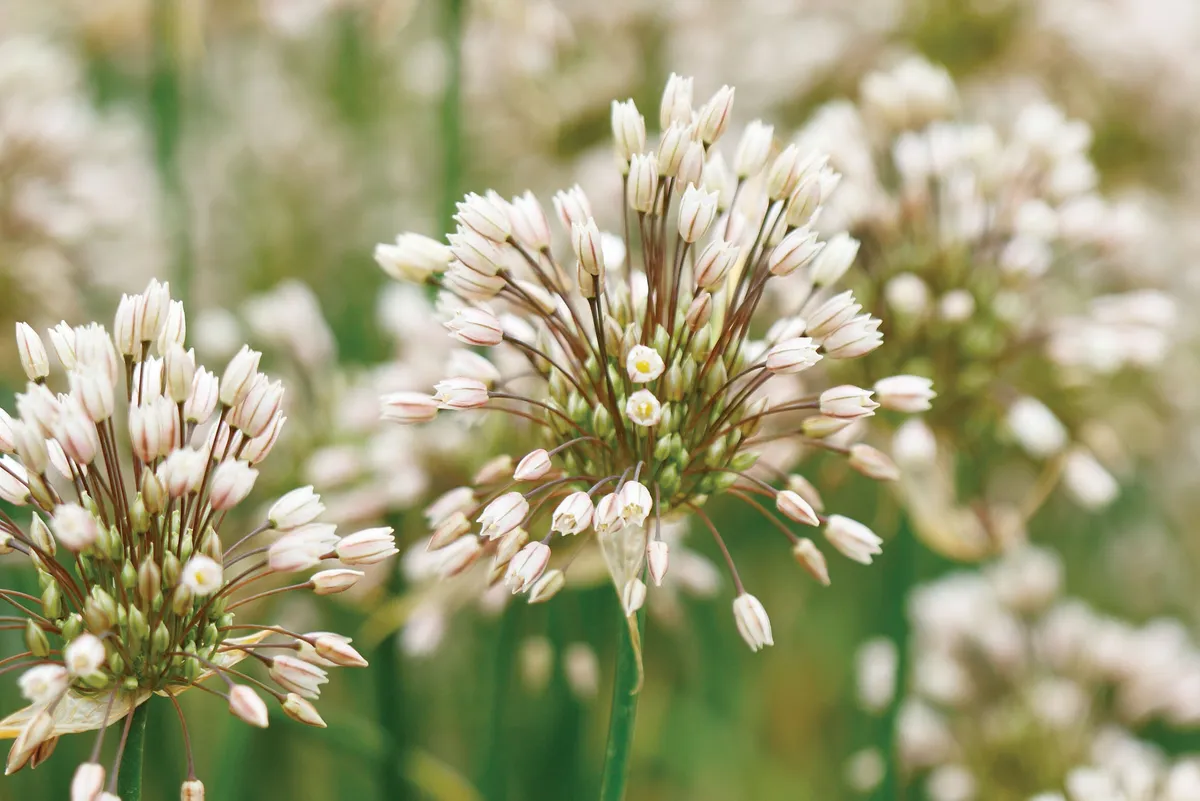
With hollow leaves and dense growth, this species resembles white-flowered chives. Will tolerate clay soils as long as they are not waterlogged in winter. 40cm
Where to see and buy alliums
Avon Bulbs, Tel 01460 242177, avonbulbs.co.uk
Cotswold Garden Flowers, Tel 01386 422829, cotswoldgardenflowers.co.uk
Peter Nijssen, Tel +31 23 547 1056, pcnijssen.nl
Plant World Seeds, Tel 01803 872939, plant-world-seeds.com
